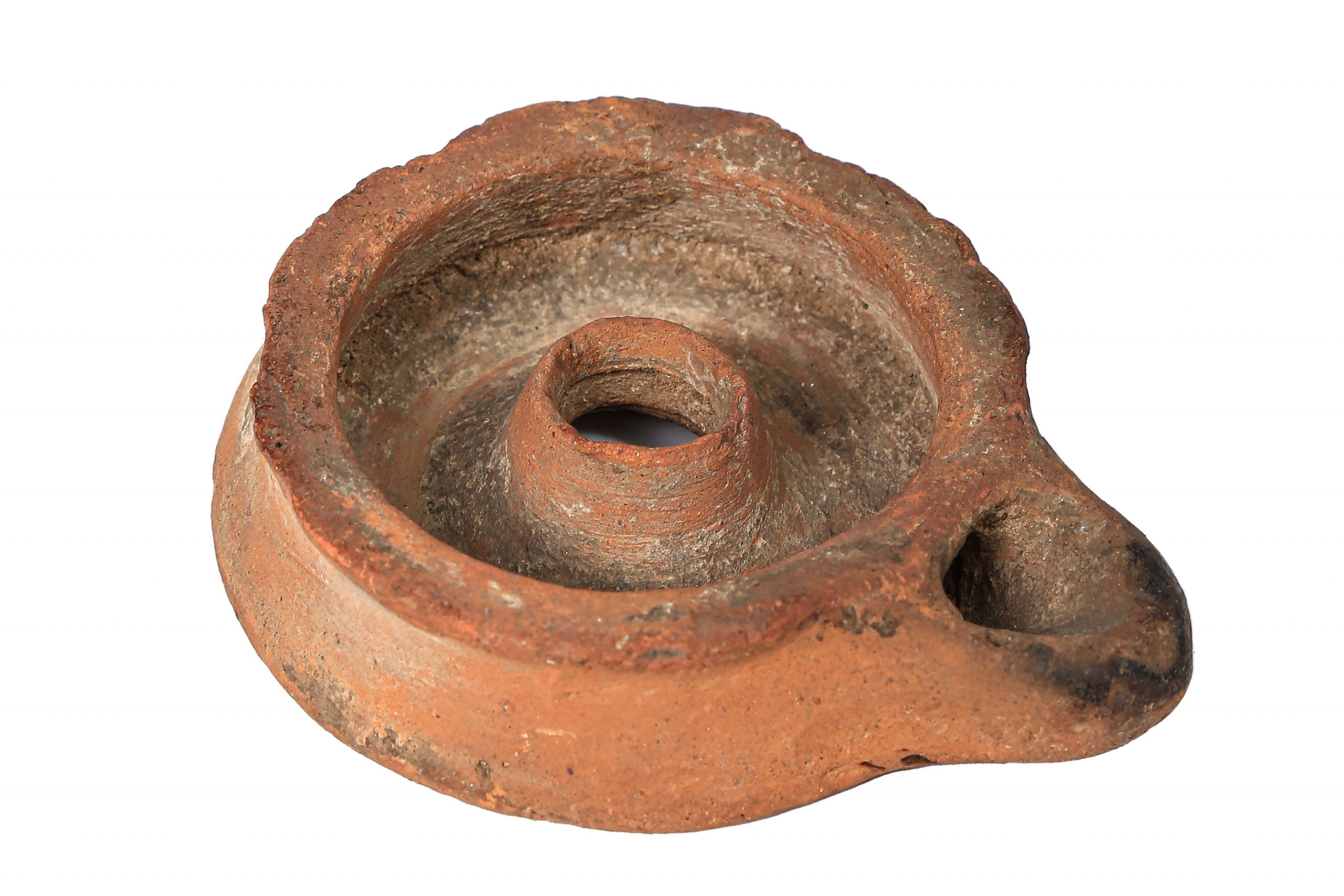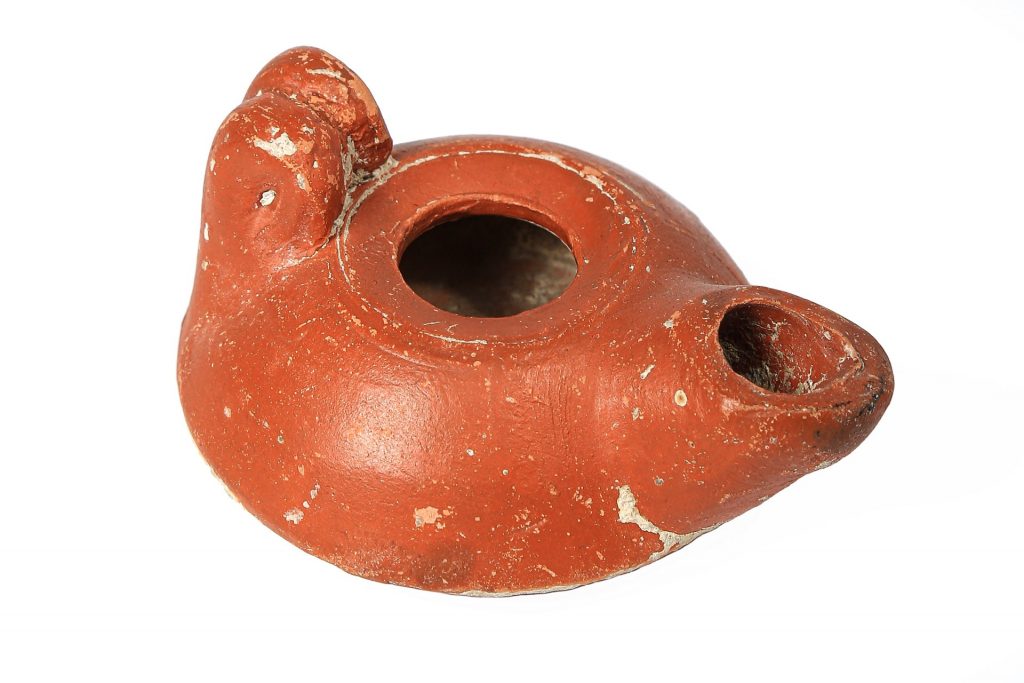Oil Lamp
The most prominent function of oil lamps was lighting. They were presented to the Gods as votive items in temples and sanctuaries. Also, they were placed in graves as burial gifts. Early examples of oil lamps were made of stone in Paleolithic Age. During these times, seashells also served as oil lamps. Later, they were made by hand from terracotta in the 2nd millennium BCE. The handmade technique was used for a long time and continued in the first half of the 1st millennium BCE. Potter’s wheels started to be used in lamp making in the 8th century BCE. Wheel-made lamps were circular shaped and their circular upper part were open. These upper sections, called “discus”, gradually shrank as time progressed. The discus turned into a smaller air hole above the body during the Roman Imperial Period. Oil lamps were produced on the wheel until the beginning of the 3rd century BCE, and from this date, there has been a significant change in production technology. Various decorations were made on the lamps using the molding technique. While they were generally made from terracotta, there are also many bronze examples from the Roman Imperial and Byzantine Periods.
How can we help you?



